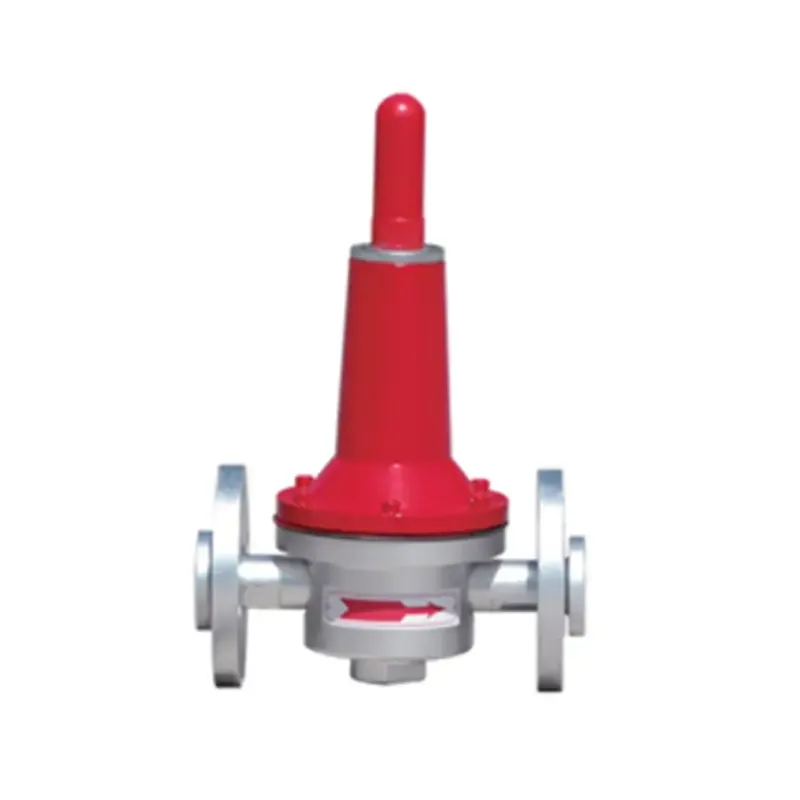
Nov . 20, 2024 09:00
Back to list
صمام تخفيض ضغط الغاز
Pressure Reducing Valve for Gas An Overview
In the realm of gas distribution and management, the pressure reducing valve (PRV) plays a pivotal role. Designed to control and reduce the pressure of gas within a system, it ensures safe and efficient operation for various applications, from residential heating systems to industrial processes. Understanding the functionality, features, and significance of a PRV is essential for anyone involved in gas management.
What is a Pressure Reducing Valve?
A pressure reducing valve is a mechanical device that automatically reduces high inlet pressure to a lower outlet pressure. These valves are crucial in ensuring that the gas delivered to appliances and equipment operates within the required pressure range. When gas is transported from its source, whether it's a natural gas pipeline or a storage tank, it often arrives at a high pressure. Directly using gas at this high pressure can be hazardous and could potentially damage appliances or systems. Therefore, a PRV is installed right before the point of use to ensure safety and efficiency.
How Does It Work?
The operation of a pressure reducing valve is relatively straightforward. At the core of its design is a diaphragm that responds to changes in pressure. When gas enters the valve, it encounters the diaphragm, which moves according to the pressure level. If the inlet pressure is too high, the diaphragm moves to close the valve, reducing the flow and thus the outlet pressure. Conversely, if the outlet pressure drops below the set point, the diaphragm moves to open the valve, allowing more gas to flow through. This self-regulating mechanism provides a consistent and reliable gas pressure to downstream equipment.
.
PRVs are utilized in various settings where gas is employed. In residential applications, they are commonly found in home heating systems, gas stoves, and water heaters. By maintaining appropriate pressure levels, PRVs help to prevent gas leaks, explosions, and damage to appliances. In industrial contexts, these valves are critical for processes that require precise pressure control, such as in power generation, chemical manufacturing, and food processing.
صمام تخفيض ضغط الغاز

Moreover, PRVs contribute to energy efficiency by ensuring that gas is supplied at the optimal pressure for combustion processes. This not only reduces fuel costs but also minimizes emissions, aligning with today's environmental standards.
Key Features and Benefits
1. Safety The primary benefit of a pressure reducing valve is the safety it provides. By regulating gas pressure, PRVs significantly mitigate the risk of explosions or equipment failure due to excessive pressure.
2. Reliability Most PRVs are designed for durability and low maintenance, capable of withstanding harsh conditions while providing consistent performance.
3. Versatility Pressure reducing valves come in various sizes and specifications, making them suitable for a wide range of applications, including residential, commercial, and industrial.
4. Cost-Efficiency By ensuring that gas is used efficiently, these valves can lead to significant savings in energy costs. This makes them a wise investment for both individuals and businesses.
Conclusion
In summary, the pressure reducing valve for gas is a crucial component in the safe and efficient management of gas systems. Its ability to automatically adjust and regulate pressure levels ensures not only the safety of users but also the longevity and efficiency of gas-consuming appliances and equipment. As the demand for reliable and safe gas systems continues to grow, the importance of PRVs in our energy infrastructure cannot be overstated. Emphasizing proper selection, installation, and maintenance of these valves will lead to enhanced safety and operational performance, demonstrating their vital role in modern gas management.
Next:
Latest news
-
Safety Valve Spring-Loaded Design Overpressure ProtectionNewsJul.25,2025
-
Precision Voltage Regulator AC5 Accuracy Grade PerformanceNewsJul.25,2025
-
Natural Gas Pressure Regulating Skid Industrial Pipeline ApplicationsNewsJul.25,2025
-
Natural Gas Filter Stainless Steel Mesh Element DesignNewsJul.25,2025
-
Gas Pressure Regulator Valve Direct-Acting Spring-Loaded DesignNewsJul.25,2025
-
Decompression Equipment Multi-Stage Heat Exchange System DesignNewsJul.25,2025

